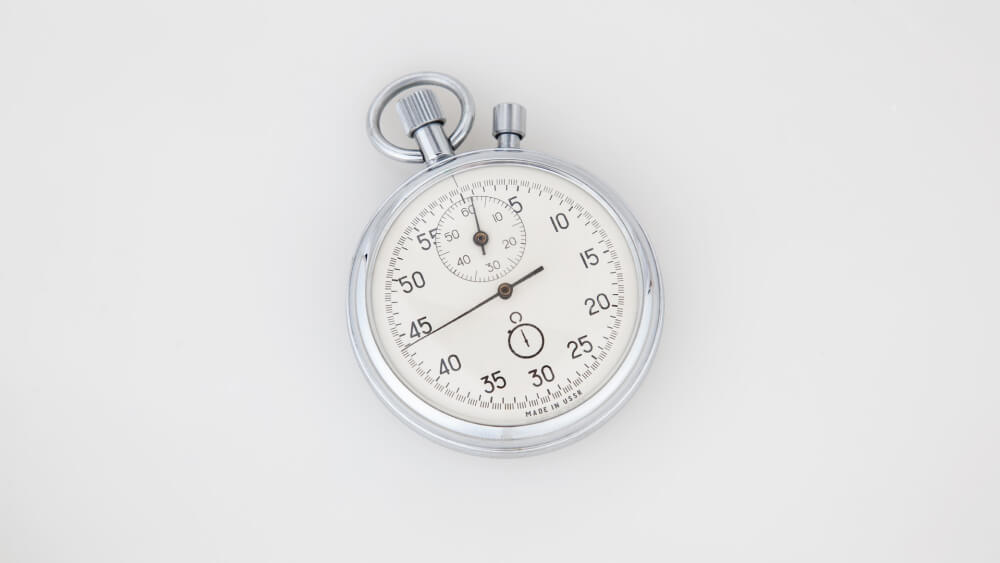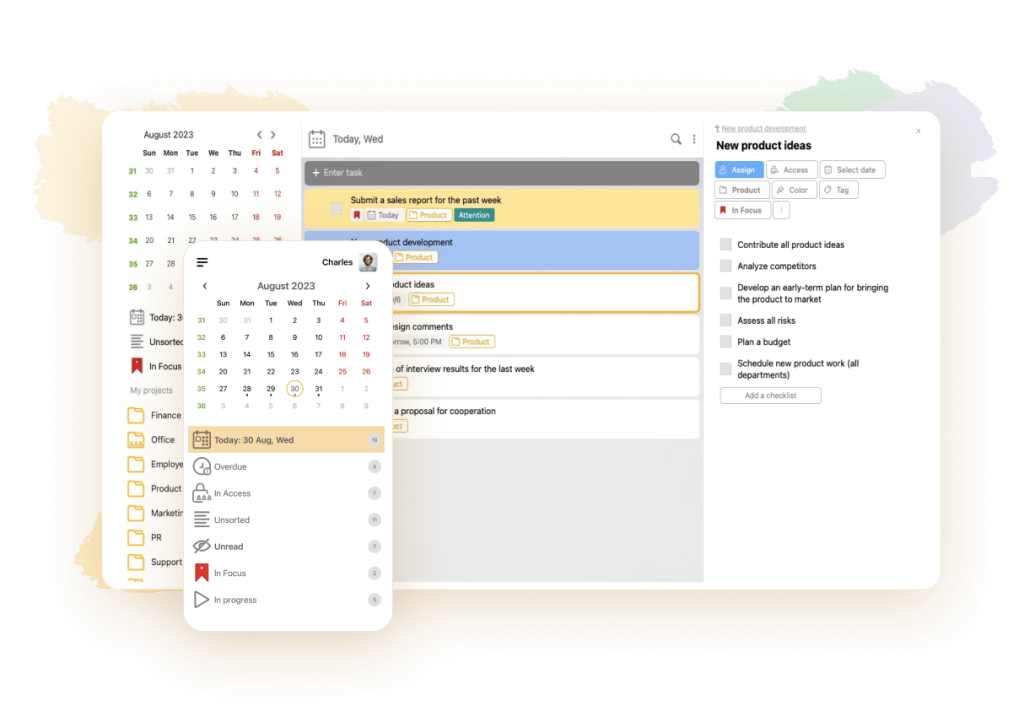Timing technique: application and steps

Do you work a lot and hardly ever rest, but still have no time for anything? Do you plan a lot of things for the day, but most of them remain unfinished, because the real deadlines are very different from the planned ones? Then you should think about where your time goes. Various time management tools and techniques, such as the timekeeping method, can help you figure it out. We will tell you how to use this technique to put your life in order. How to organize effective teamwork with the help of timekeeping. How to analyze results and optimize routine, repetitive tasks.
What the timekeeping technique is used for

This method gives a clear picture of how much time is spent on important and minor tasks, how busy certain performers in the team are. It is used to assess the efficiency of employees, to calculate BE indicators, and to optimize work processes. Also, the timekeeping technique can be used to improve personal performance. It qualitatively identifies “time absorbers” – chronophages. That is, empty activities that take up time but are not useful.
Other applications of timekeeping:
- Analyze the effectiveness of time management techniques and tools used.
- Refine the duration of typical tasks to correctly set due dates.
- Detecting hidden time reserves.
- Making a report on the work done at hourly method of payment to remote employees, freelancers.
- Formation of the skill of careful and rational handling of time.
The essence of the timing technique contains the following actions:
- You record all tasks lasting 10 minutes or more with a time stamp.
- You select the metrics to track.
- Analyze the results obtained.
- Graph the dynamics of their change.
Using timekeeping, you can find out how much time is spent on routine and repetitive tasks or on breaks. You can find things that are no longer relevant or activities that should be abandoned altogether, freeing up time for more important tasks or quality rest.
The timekeeping method helps to find a balance between the plan and the actual tasks.
Steps of the timing technique

The study will require a clock and timekeeping tables, which can be printed out or you can use their electronic versions in your planner. Most importantly, they should always be readily available.
The algorithm of this technique consists of three steps:
- To accomplish the first step of timekeeping ask yourself what you want to change. For example, get rid of chronophages. To do this, you need to record minute by minute the time spent on correspondence with colleagues or acquaintances, studying the feeds of social networks. If the figure you see leads you to shock, take appropriate measures: limit communication in social networks, set limits for yourself to stay on the Internet. You can also analyze a useful activity that you don’t have enough time for, or a resourceful activity that gives you strength and energy for active actions.
- The next step of the timekeeping technique is to write down all the activities, indicating the beginning and end of the activities. For the first few days, write down activities that take 10-15 minutes. For greater effect, you can add comments about how useful a task was. You should also record situations when several things were done at the same time. For example, you were editing an article and corresponding with a client. In such cases, the efficiency decreases, so more time is spent on tasks. It is important to use these moments to analyze the results of timekeeping.
- The third stage is to examine the information and draw conclusions. This involves analyzing specific tasks, such as working on a project. At the end of the observation, you will see how much time is spent on different activities related to the project, how often you get distracted, perform minor or unimportant tasks. This will give you a clear understanding of what to do next and in which direction to move.
It is important to analyze the results over time, comparing the results of several periods. Do you see improvements? Then you are on the right track.
Keeping timekeeping can be done in several ways:
1) By recording in a table the beginning and end of each case, indicating the duration of the work:
| Beginning | Completion | Duration | Task Description |
| 10.00 | 10.20 | 20 min | Project meeting |
| 10.20 | 12.00 | 1 hour 40 min | Working with the database |
| 12.00 | 13.00 | 1 hour | Report writing |
| 13.00 | 14.00 | 1 hour | Lunch |
2) Commenting on each piece of work completed:
| Beginning | Completion | Duration | Task Description | Commentary |
| 10.00 | 10.20 | 20 min | Project meeting | Heard another comment that the work needs to be done better. |
| 10.20 | 12.00 | 1 hour 40 min | Working with the database | Completed the week’s volume in full. |
| 12.00 | 13.00 | 1 hour | Report writing | Was able to do half of it because there was not enough data to analyze. |
| 13.00 | 14.00 | 1 hour | Lunch | Had a good rest, started watching an interesting movie. |
With these records, you can determine your efficiency and identify unproductive things to do.
The following formula can also be used to account for time spent unproductively:
Gross Time – Net Time = Absorbers (chronophages), where
The gross time – the total period;
Net time – the sum of useful actions.
Timekeeping can be done on paper, in a notebook or diary. However, it will be difficult to work with the data in this way. Numerical values will have to be calculated on a calculator, in order to draw up a schedule based on them. It is more convenient to use a special program-planner for these purposes. In any case, this tool should always be at hand, since everything will have to be written down as quickly as possible.
Another important requirement: absolute honesty towards yourself. If in the process of work you are distracted by some secondary matter, this fact should be recorded in the table. It is also impossible to deliberately reduce or exaggerate your time expenditures. Neither should you record small tasks that take no more than 5 minutes in your timekeeping. If you have difficulty keeping track of time manually, use automatic timekeeping programs.
How to work with timing results
To make it easier to categorize tasks in the future, write them down in random order during the first few days of observation. Then you will figure out which group to categorize them into. The following groups of tasks can be recorded in the timecard:
- Time eaters(unproductive activities that take up time);
- Important things to do that are meaningful to accomplish goals;
- Time spent sleeping, eating, resting, and other natural needs necessary for a full life.
Work is carried out with the indicators that require adjustment. Their actual value is found out, appropriate norms are set, and then these parameters are monitored in dynamics. After each timekeeping session, “weak points” in time management are identified. When analyzing efficiency, the following questions are asked:
- Why is the actual task completion time less or more than the planned time?
- How do you equalize these metrics?
- What should be done in similar cases to prevent such discrepancies?
How to perform timekeeping in LeaderTask

You can track the time of each task manually by setting an alarm or timer on your phone. But in modern conditions, there are special electronic applications for this purpose, such as LeaderTask. The program can be used to make lists of tasks for a day, week, month or other period. Plan for each of them the time of execution, and then compare it with the actual data. Delegate tasks to other performers.
To set up the timekeeping mode in LeaderTask, simply start timing a task and set the status to “in progress”. You will get the most accurate and correct information about the number of hours and minutes spent on each action. Enter the results into a spreadsheet for further observation and analysis. The application will always be at your fingertips, on your computer, tablet or smartphone. You can use it without an internet connection to quickly record all your current and planned activities.
Conclusion
When using the timekeeping technique to track the duration of daily tasks, don’t make it an end in itself. Remember that this method is only a tool to improve your performance. If you do not change the very system of time management, its results will be useless. By the way, during timekeeping, many indicators improve automatically. This is quite understandable: we are more attentive to our time and notice moments that previously seemed insignificant to us.



